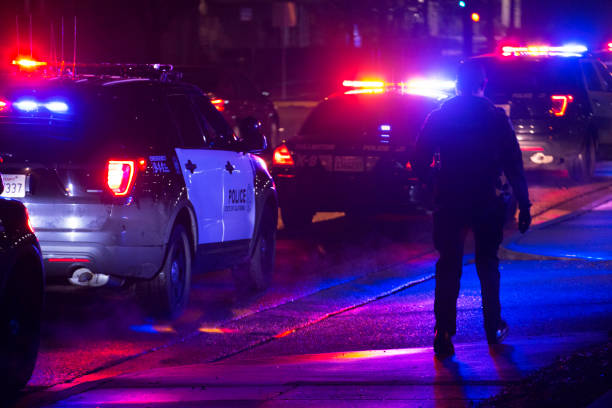A tragic shooting Thursday evening in Chicago’s North Lawndale neighborhood has left a 15-year-old boy dead and another 14-year-old boy seriously wounded, intensifying concerns over persistent youth violence and gun crime in the city’s West Side communities. According to the Chicago Police Department, the incident occurred around 7 p.m. in a park located on the 1400 block of South Sacramento Street, an area frequented by local youth for recreation and gathering.
The two victims, both teenagers and reportedly acquaintances, were together at the park when they were approached by an unidentified man. Without warning, the suspect opened fire on the boys before fleeing the scene. The 15-year-old was shot in the back, and the 14-year-old sustained a gunshot wound to the neck. Emergency responders arrived quickly, transporting both victims to Stroger Hospital. Despite urgent medical efforts, the 15-year-old succumbed to his injuries later that evening. The younger teen remains hospitalized in serious condition.
Authorities have yet to release the identities of the two victims, pending notification of their families. No arrests have been made, and police have not provided a suspect description or disclosed whether the teens were deliberately targeted or victims of a random act of violence. The lack of immediate leads or surveillance footage complicates an already high-stakes investigation, which is now being handled by detectives from the Area Four division.
As the investigation intensifies, community members are reeling from another instance of senseless violence. The North Lawndale neighborhood has long struggled with the systemic issues that often correlate with gun crime, including poverty, limited access to youth programming, and strained community-police relations. Thursday’s shooting, which claimed the life of a minor in a public park, strikes at the heart of ongoing debates over public safety and youth protection.
In response to the shooting, local leaders and activists have renewed calls for comprehensive interventions that extend beyond increased policing. “We can’t keep losing our children to violence,” said one North Lawndale resident. “We need more resources for these kids—more mentors, more programs, more safe spaces.” Their sentiment is echoed across Chicago’s West Side, where community engagement groups have long advocated for addressing the root causes of crime: economic disenfranchisement, underfunded schools, and the cycle of trauma that begins at a young age.
The fact that the shooting occurred in a park—a place that should be synonymous with safety and leisure for children—adds a cruel dimension to the tragedy. Parks are vital communal spaces in densely populated urban neighborhoods like North Lawndale. That they can become the sites of such lethal violence raises urgent questions about how public spaces are secured and what measures can be taken to prevent future bloodshed.
Law enforcement, while acknowledging the systemic issues at play, continue to emphasize the need for public cooperation in identifying suspects and solving crimes. The Chicago Police Department has encouraged anyone with information to come forward, noting that tips can be submitted anonymously. In cases involving minors, timely information from the community can make a critical difference in both achieving justice and preventing retaliation or further escalation.
The timing of the incident also underscores the seasonal uptick in violence that Chicago experiences during the summer months. Historically, warmer weather correlates with higher rates of street crime, as more people congregate outdoors. In this context, the city’s ability to manage and respond to such incidents becomes even more pressing.
The emotional and psychological toll of the shooting extends far beyond the two victims. Families, schoolmates, park regulars, and neighborhood residents are left grappling with grief, fear, and uncertainty. In a city already weary from the cumulative impact of youth homicide, each new victim adds to a growing sense of urgency and sorrow.
City officials, while offering condolences, have reiterated their commitment to violence prevention strategies. These include community-based interventions, expanded mental health resources, and violence interruption programs designed to mediate conflicts before they escalate. Yet critics argue that such efforts remain underfunded and unevenly implemented, especially in areas like North Lawndale that bear a disproportionate burden of violence.
The tragic loss of a 15-year-old life to gunfire serves as both a painful reminder and a call to action. As Chicago mourns yet another young victim, the need for durable solutions becomes ever more apparent. Public outrage is palpable, but so is the resolve to push for change. For now, though, the focus remains on healing, investigation, and hope that justice will be served.
More details are expected as the investigation proceeds. In the meantime, the park that served as the site of Thursday’s violence stands silent, a somber testament to a community in mourning and a city still searching for answers.

